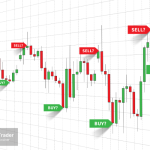[‘le-va-rii]
Leverage refers to the use of borrowed capital or margin to increase the potential return on an investment.
What is Leverage?
Leverage is a term used in trading to describe the practice of using borrowed funds or margin to potentially amplify the returns on an investment. By utilizing leverage, traders are able to control larger positions than they would be able to with their own funds alone, which can lead to greater potential profits. However, it's important to note that leverage also increases the risk of losses, so it's crucial for traders to use proper risk management strategies and only use leverage that they can afford to lose.
Key Takeaways
- It has the potential to magnify gains and losses, so traders must be cautious when using leverage and use appropriate risk management strategies to avoid significant losses.
- By utilizing leverage, traders can control larger positions than they would be able to with their own funds alone, which can lead to the potential for higher profits.
- In order to use it, traders typically need to borrow funds or utilize margin, which can come with fees and interest charges.
- It increases the risk of losses, especially if traders use too much leverage or do not manage their risk properly.
- While leverage can be a powerful tool, it should be used with caution and only by traders who understand the risks and have the necessary knowledge and experience to use it effectively. Traders should also have a clear understanding of the risks involved and should only use leverage that they can afford to lose.
Example
A trader has $1,000 in their trading account and they want to buy 100 shares of a stock that is trading at $50 per share, for a total investment of $5,000. Without leverage, the trader would only be able to buy 20 shares ($1,000 divided by $50 per share).
However, if the trader uses 5:1 leverage, they would be able to control a position of $5,000 with only $1,000 of their own funds. This means they could buy 100 shares of the stock instead of 20. If the stock price increases to $55 per share and the trader sells their 100 shares, they would earn a profit of $500 ($5 increase in price per share x 100 shares), which is a 50% return on their initial investment of $1,000.
On the other hand, if the stock price decreases to $45 per share, the trader would lose $500 ($5 decrease in price per share x 100 shares), which is a 50% loss on their initial investment of $1,000. This illustrates how it can amplify both gains and losses and why it's important for traders to use appropriate risk management strategies.
Back to Glossary.






